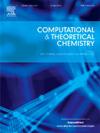Boron oxide B5O6 and B5O6− clusters with a hexagonal B3O3 ring: Overturn of potential energy landscapes by one electron
IF 3
3区 化学
Q3 CHEMISTRY, PHYSICAL
引用次数: 0
Abstract
Boron oxide clusters feature novel structures and nonclassical chemical bonding, owing to the electron deficiency of boron. We report on a quantum chemical study on structural, electronic, and bonding properties of B5O6 and B5O6− clusters through global-minimum (GM) searches and electronic structure calculations. The neutral B5O6 cluster is shown to assume a GM structure composed of a boroxol core, a terminal boronyl, and a terminal BO2 group, which differs distinctly from anion GM B5O6− cluster. The latter has a boroxol core and three terminal ligands: two boronyls and one O− unit. One electron completely overturns the potential energy surfaces of the present system, which is governed by the nature of frontier molecular orbitals in two types of structures. As a consequence, one electron can make a difference by as much as 2 − 3 eV. The structural transformation is also elucidated using a proposed possible mechanism of boronyl ligand migration.

求助全文
约1分钟内获得全文
求助全文
来源期刊

Computational and Theoretical Chemistry
CHEMISTRY, PHYSICAL-
CiteScore
4.20
自引率
10.70%
发文量
331
审稿时长
31 days
期刊介绍:
Computational and Theoretical Chemistry publishes high quality, original reports of significance in computational and theoretical chemistry including those that deal with problems of structure, properties, energetics, weak interactions, reaction mechanisms, catalysis, and reaction rates involving atoms, molecules, clusters, surfaces, and bulk matter.
 求助内容:
求助内容: 应助结果提醒方式:
应助结果提醒方式:


